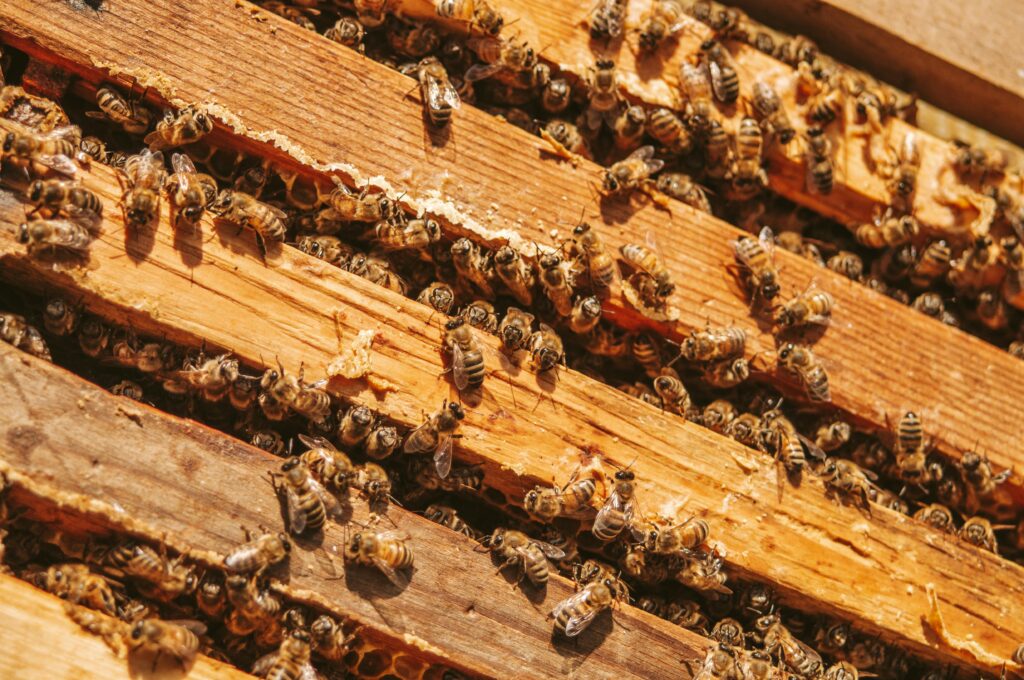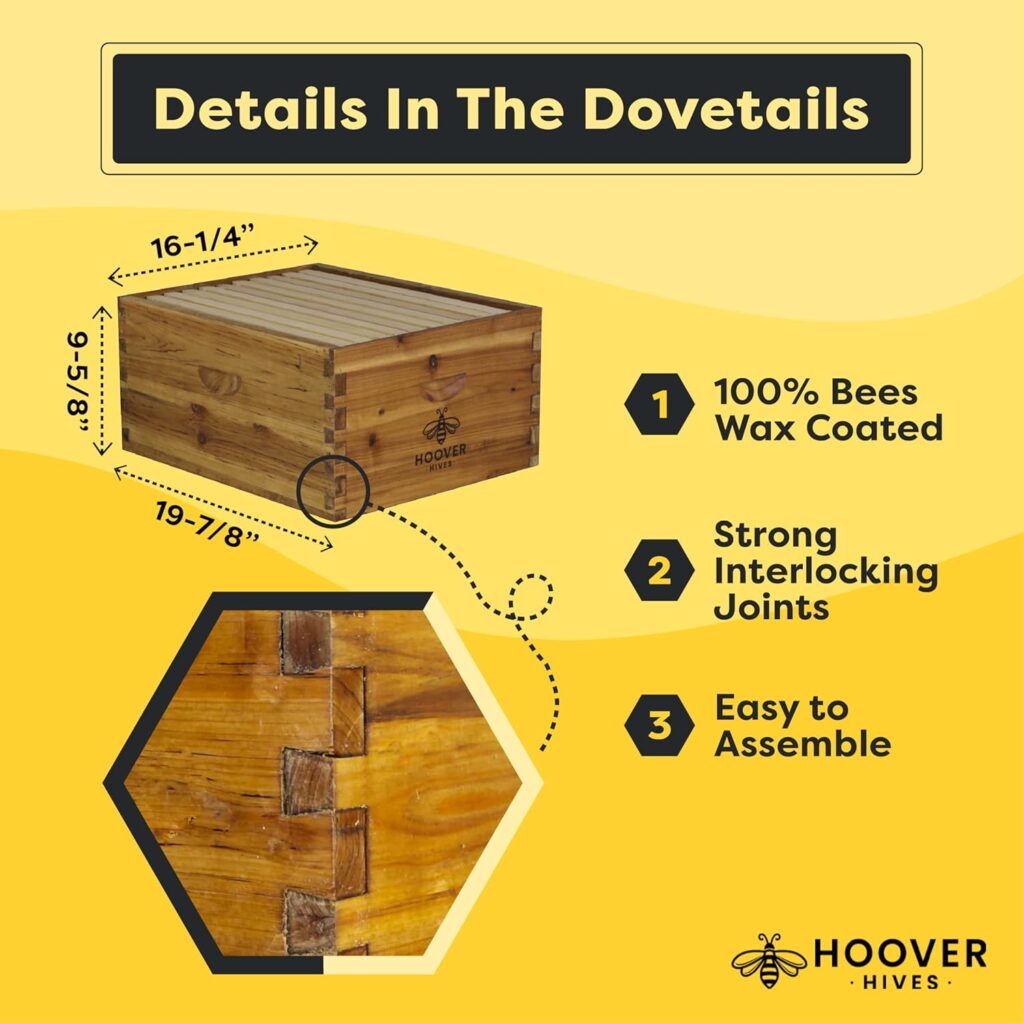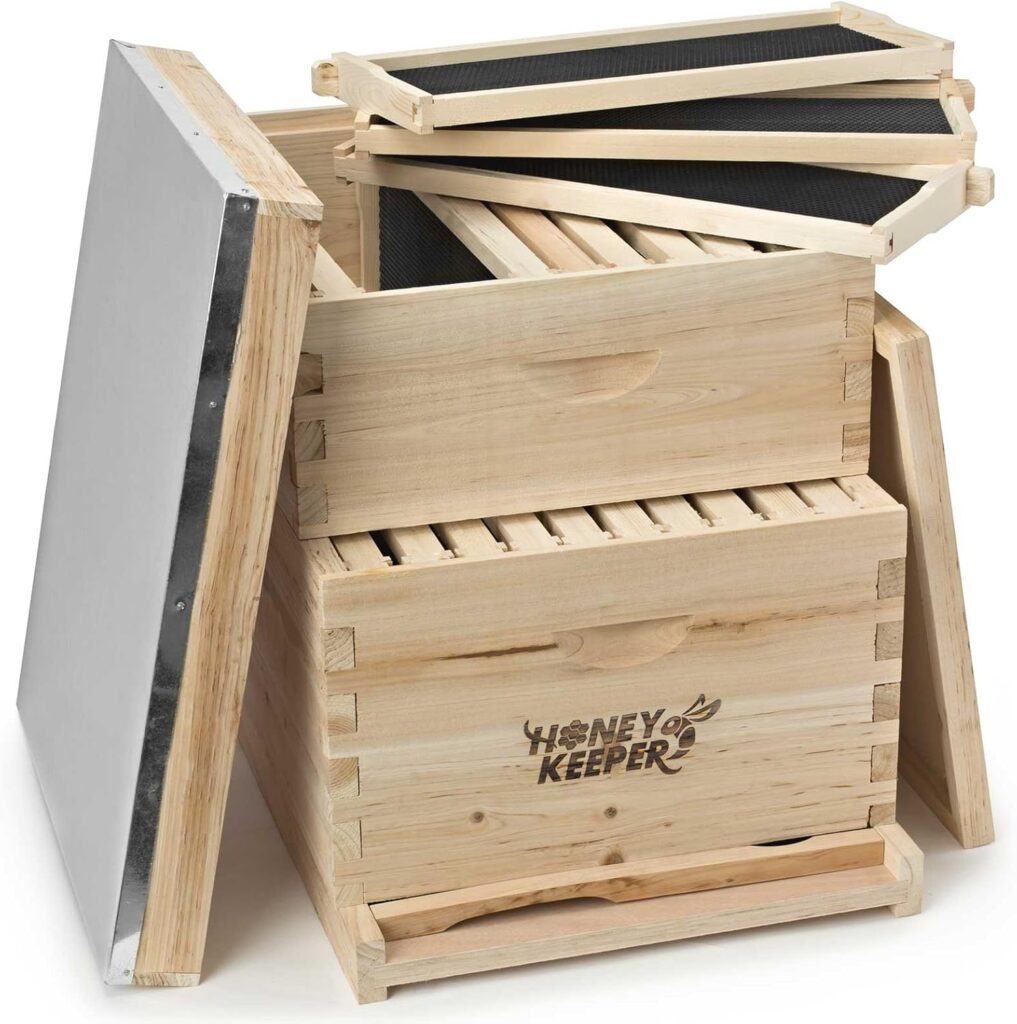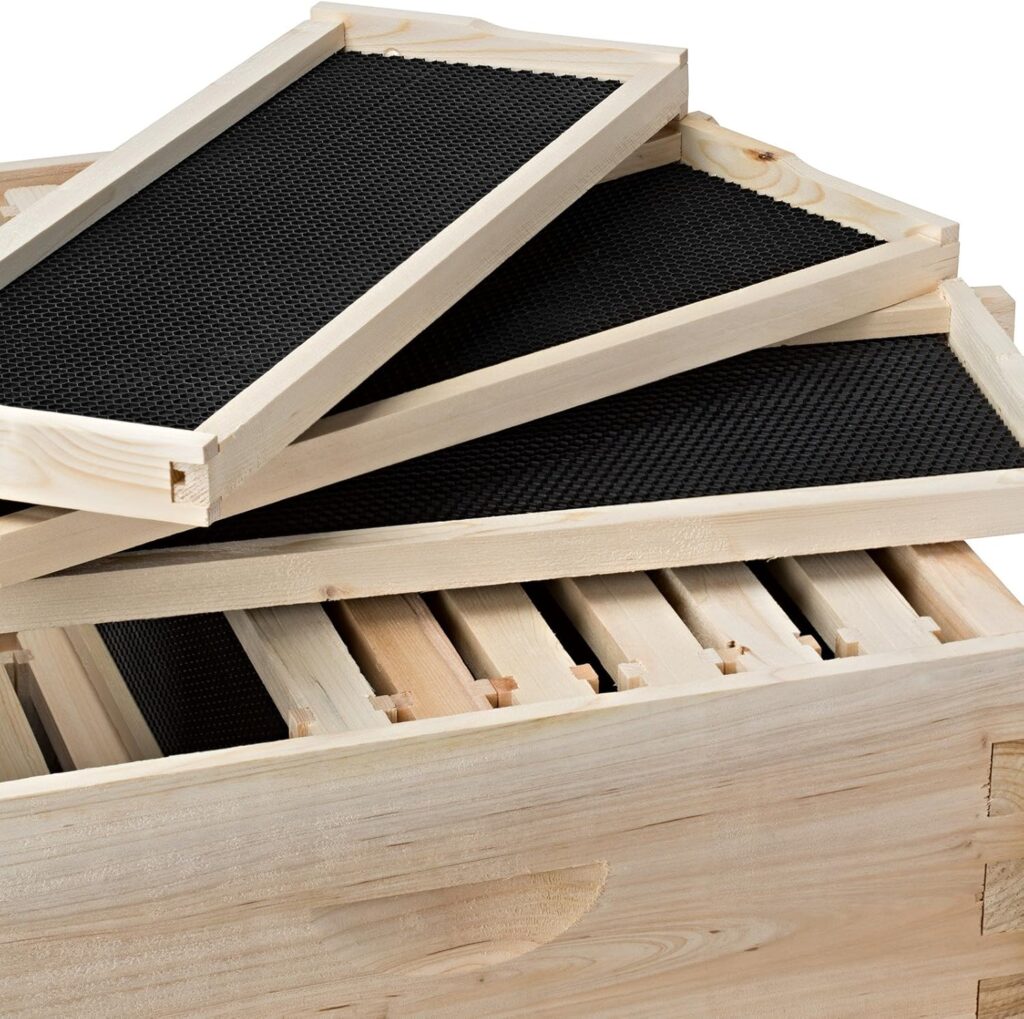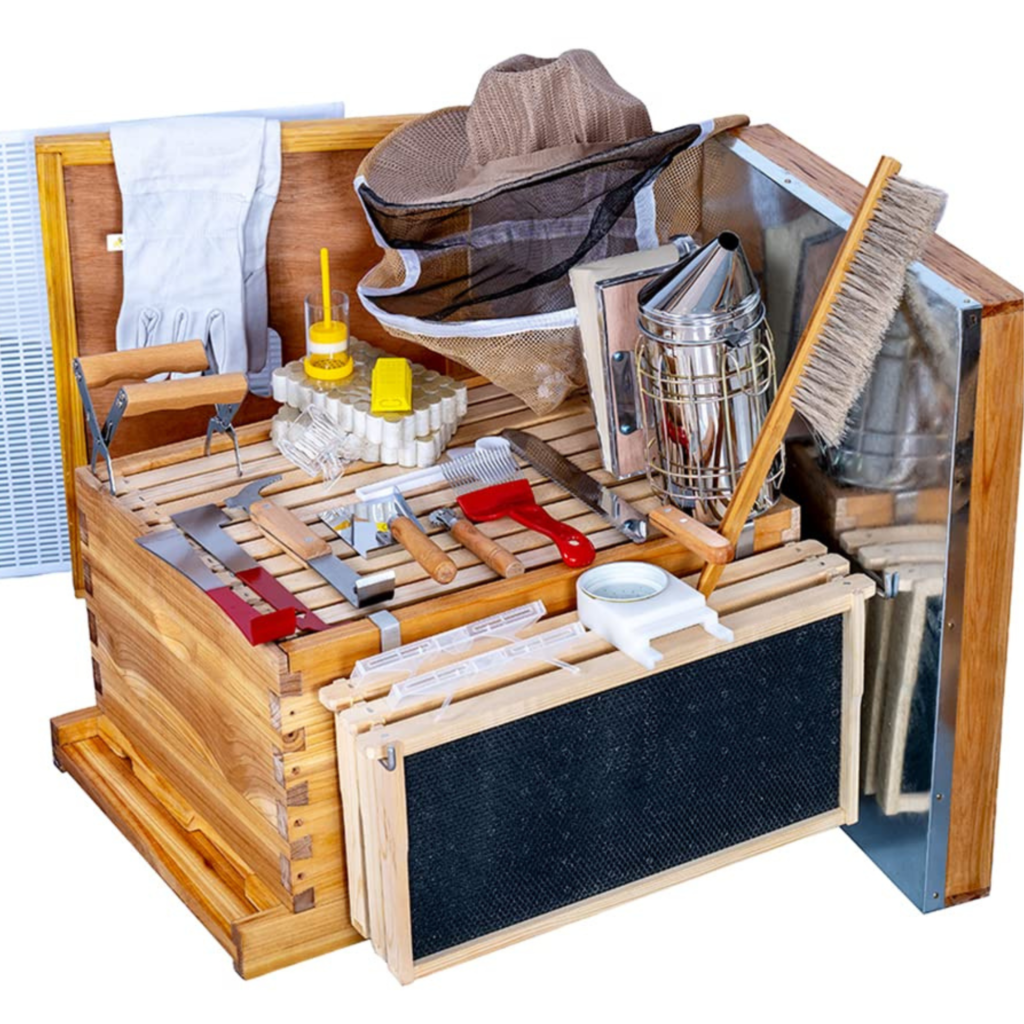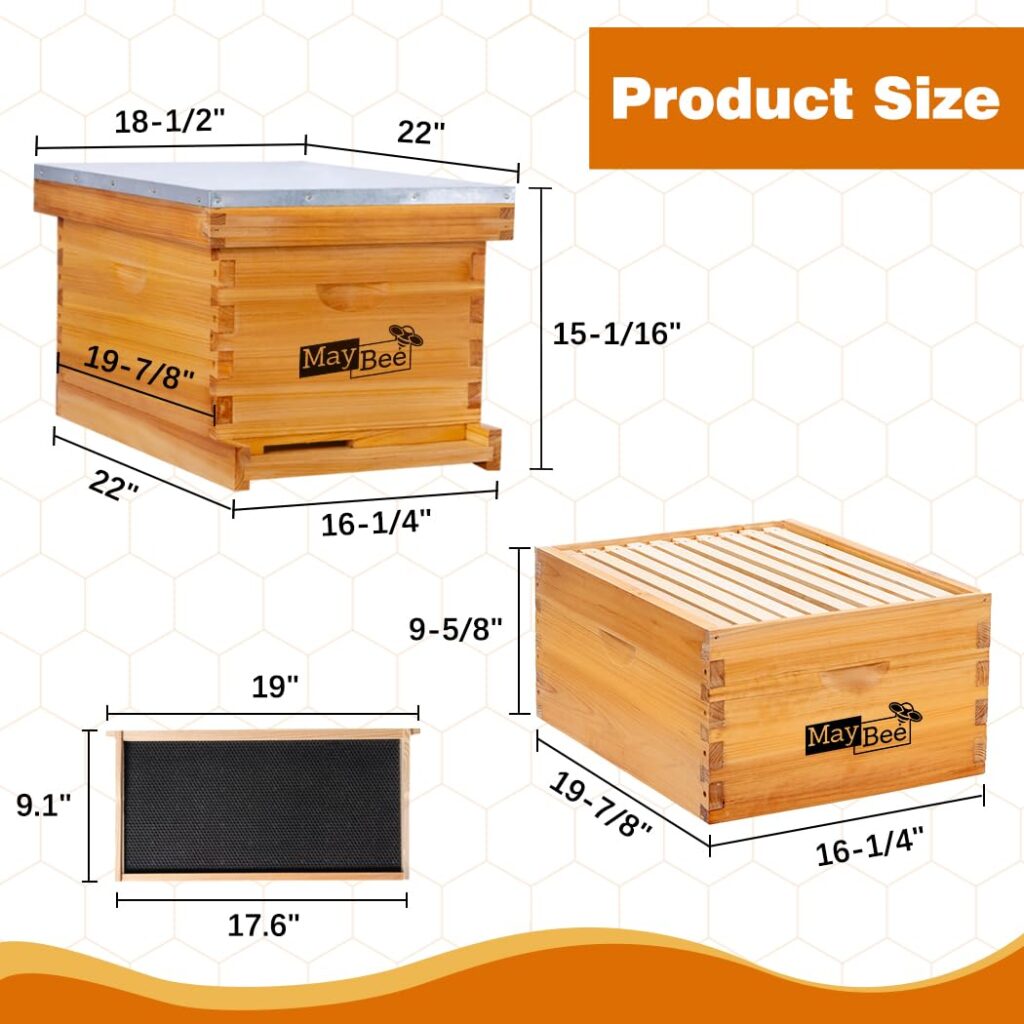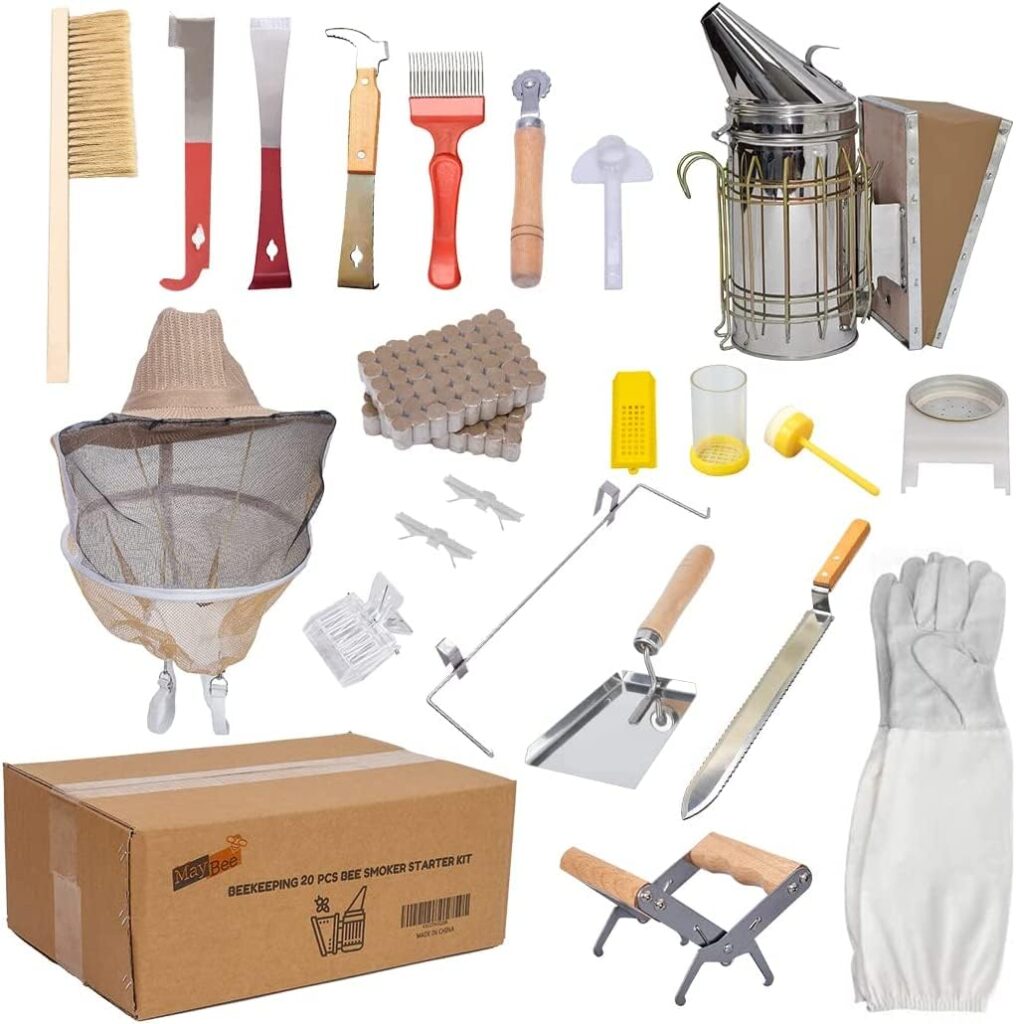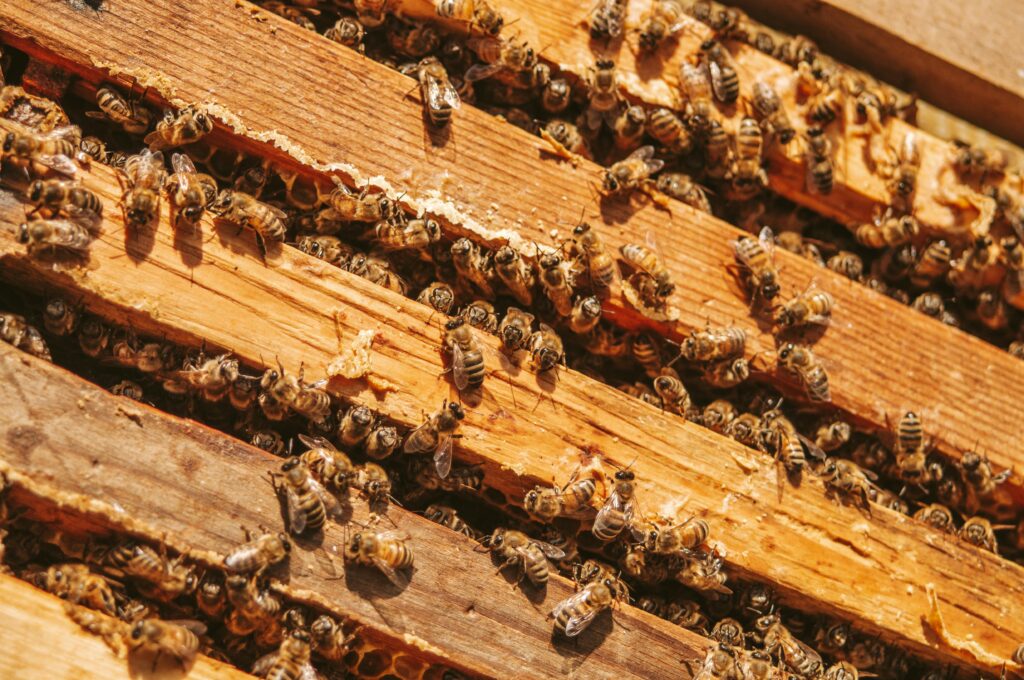
Imagine the soft hum of bees as your morning soundtrack. Or the joy of harvesting honey, like liquid gold in the sun. For beginners, starting a bee hive is more than just buying supplies. It’s about connecting with nature and helping the environment.
Beekeeping is booming in the U.S., with more people than ever before taking up the hobby1. It’s not just fun; it also helps local bees pollinate and keep our ecosystems diverse1.
Picture stepping into your backyard and hearing your bees buzzing. It shows your hard work and the good you’re doing for the planet. Starting a bee hive is full of benefits and special moments, like watching your colony grow and tasting your honey.
Key Takeaways
- Backyard beekeeping is increasingly popular across the United States, boosting local bee populations1.
- Starting a bee hive provides both environmental benefits and personal satisfaction.
- Beginner beekeepers need to gather essential urban beekeeping supplies to ensure a successful start.
- Understanding the commitment involved in beekeeping is crucial for long-term success2.
- Harvesting your own honey connects you to nature in a unique, rewarding way.
Introduction to Beekeeping
Beekeeping is more than a hobby; it’s a way to help save bees and make honey. It’s a calming activity that connects you with nature. It also helps local ecosystems by supporting biodiversity and giving you fresh honey.
Why Beekeeping?
Many ask why start beekeeping. It’s a rewarding hobby that gives you honey and beeswax. It also helps the environment by pollinating plants in your garden. Starting with beekeeping for beginners helps preserve biodiversity and supports your local ecosystem.
Benefits of Beekeeping in Your Backyard
Having a hive in your backyard offers many beekeeping benefits:
- Fresh Honey: Enjoy organic honey from your hive.
- Pollination: Improve your garden’s growth and yield with natural pollination.
- Eco-Friendly: Support local bees and biodiversity, making a positive environmental impact.
- Educational: Learn about nature through this fascinating hobby.
Whether for hobby or environmental reasons, beekeeping for beginners is great. It lets you contribute to nature while enjoying personal benefits.
By embracing these beekeeping benefits, you’ll see why why start beekeeping. It connects you with nature and supports sustainable living23456.
Understanding Honeybees and the Hive
Learning about honeybee biology and the hive’s structure is key for beekeeping success. Honeybees live in a social colony with workers, drones, and a queen. Each has a special role. The hive is made of honeycombs where bees live, work, and store honey. This section gives basic insights into bee life and their homes.
Honeybee Biology
Honeybees are vital for pollination. They have three main types: the queen, workers, and drones. The queen lays eggs, while workers forage, build the hive, and care for young. Drones mate with queens from other hives. Knowing these roles is crucial for beekeeping.
The Structure of a Hive
The hive’s structure is amazing, built by worker bees from wax. It has horizontal layers called combs with hexagonal cells. These cells store honey, pollen, and are nurseries for larvae. The hive’s design helps with space use and colony productivity1. It also controls temperature and humidity, perfect for bees.

The Roles Within a Bee Colony
Every bee colony has clear roles and labor division. The queen controls the colony with pheromones. Worker bees, which are sterile females, do different tasks based on age. Younger workers care for the queen and larvae, while older ones forage for food4. Drones mate with queens in warmer months for genetic diversity2. Understanding these roles helps in successful beekeeping and a healthy hive.
Checking for Allergies and Safety Precautions
Beekeeping can be safe and fun if you know the risks. A big worry for new beekeepers is bee sting allergies. It’s smart to talk to a doctor first to check for any allergies. This is because serious allergic reactions need quick help1.
Allergies to Honeybee Stings
Bee sting allergies can be mild or very serious, like anaphylaxis. It’s important to know the signs of an allergic reaction. Knowing how to act can keep you safe and calm around the hive. Always carry antihistamines or an epinephrine auto-injector with you4.
Protective Gear and Safety Measures
Wearing the right beekeeping gear is key. You’ll need veils, gloves, and full-body suits to protect yourself. These items help prevent stings and make you feel more at ease when checking the hive. Veils cover your face, and suits and gloves protect your body and hands2.
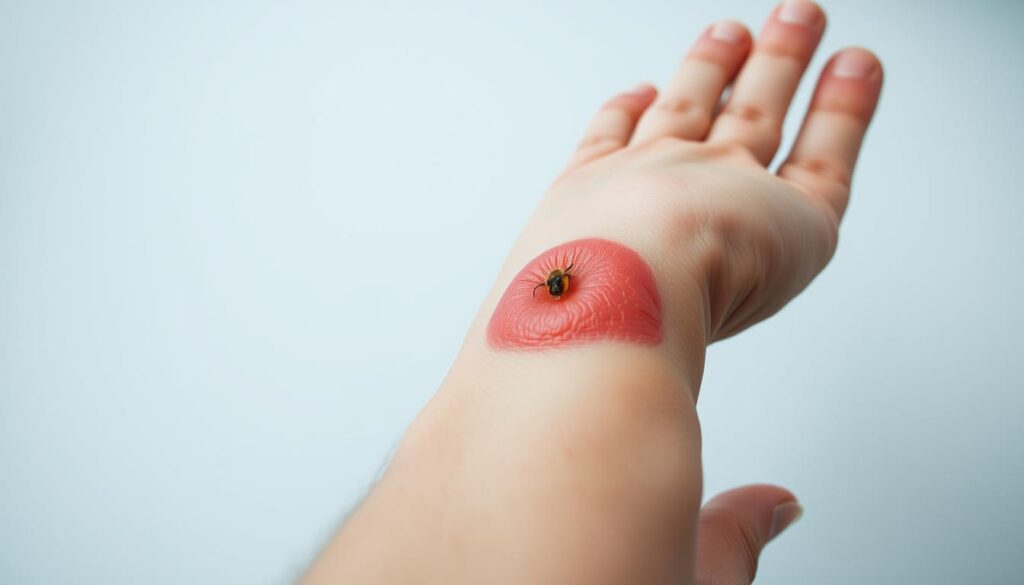
Wearing the right gear and knowing about bee sting allergies makes beekeeping safer. These steps show how important it is to be ready and prepared. They help make beekeeping a fun and safe activity for everyone.
Choosing the Right Location for Your Beehive
The spot where you place your beehive is key to your bees’ health and work. You must think about several things to pick the best spot. This helps keep your bees healthy and makes caring for them easier.
Factors to Consider
Think about the plants around your hive. They give your bees the food they need. Also, make sure there’s water nearby. Bees use it to cool their hive and feed their babies. Watch out for dangers like pesticides, predators, and bad weather.
Common Mistakes to Avoid
Don’t put your hives where it’s too windy or too shady. These spots can make it hard for bees to work and keep their hive warm. Also, stay away from places where lots of people walk. This helps avoid disturbing your bees and any problems that might come up. Choosing the right spot is a big part of starting out in beekeeping.
Build Your Own Hive or Buy a Ready to Assemble Hive?
If you want to build your own Bee Hive then you will need a good set of detailed Bee Hive Design Plans, alternatively you can buy a Ready to Assemble kit. These Bee Hive kits are usually pretty easy for anyone to assemble, if you can use a screwdriver and hammer then you are qualified, here are some ideas of Bee Hive Kits you can get:
1: Hoover Hives: The Original Beeswax Coated Beehive Kit
Includes 2 Deep & 1 Medium Boxes with 10 Wooden Frames & Heavy Wax Coated Foundations. Easy Assembly with Predrilled Holes & Screws. 6″D x 22″W x 30″H. Click here for details
2: Honey Keeper Beehive 20 Frame Complete Box Kit
2-Tier hive: Premium solid wood construction for a durable hive. Includes one deep hive body box, which serve as the colony’s living quarters. This is the hive’s largest component, holding ten frames of honeycomb. One medium super box collects surplus honey harvested from your bees and holds ten medium frames with foundations. Dimensions: 23″ Long x 18-1/4″ Wide x 19-3/4″ High. Click here for details
3: MayBee Beehive Starter Kit
10-Frame Bee Boxes and Frames Starter Kit Wax Coated Bee Hives and Supplies Starter Kit Including Beekeeping Tools Kit with Beekeeping Veil. Durable Material – With Heavy Wax Coated Cedarwood Beehive and Pinewood Honeycomb Foundation Frame, This Bee Hive is Stylish and Beautiful; Beeswaxed Food Grade Plastic Foundation Ensures the Health and Safety of Your Honey. Dimensions when assembled: 16-1/4″ x 19-7/8″ x 9-5/8″. Click here for details
Getting Your Beekeeping Supplies
Starting your beekeeping journey means getting the right supplies. The right gear keeps your bees healthy and safe. It also makes your job easier and more efficient.
Bee Hive Starter Kit Essentials
Getting a good bee hive starter kit is key. This kit usually has:
- Frames
- Bee suit
- Smoker
- Hive tool
- Extractor
- Feeders
These items are crucial for a healthy bee colony.
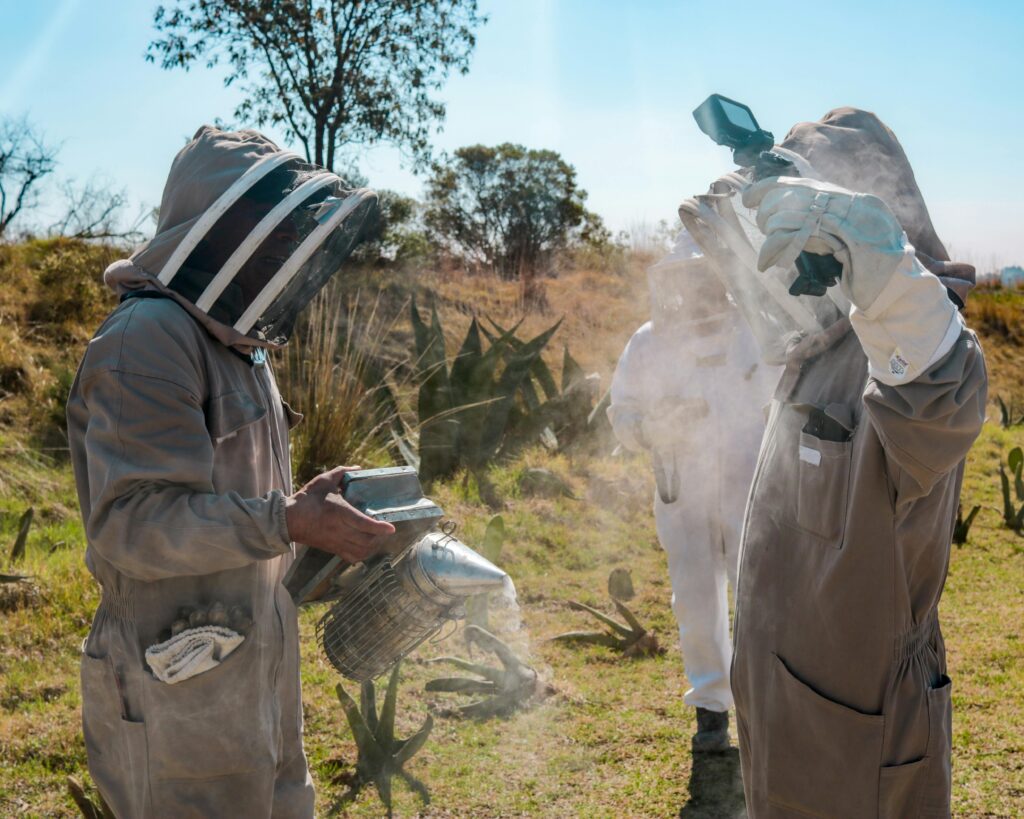
For the best advice on beekeeping supplies, talk to experts. Starting with the right tools sets you up for success. It also lays a strong foundation for your beekeeping journey.
Setting Up Your Bee Hive Starter Kit
Setting up your bee hive right is key for a healthy colony. This means paying close attention to assembling a beehive, installing bees, and initial bee care. By doing it right, you set your beekeeping journey on a solid path.
Assembling the Hive
Start by putting the hive parts together correctly. Make sure the hive stand, bottom board, and hive bodies are in place. All parts should fit well to keep your bees safe.
After setting up, put the frames in the hive bodies. Make sure they are straight and evenly spaced. This helps the bees build their comb easily.
Installing the Bees
With the hive ready, it’s time to add the bees. Carefully move your bee package or nuc into the hive. Shake the bees into the hive box gently. Make sure the queen bee is safely in her new home.
Creating a safe space for the bees is crucial. It helps them adjust to their new home.

Initial Feeding and Care
Early care is vital for your hive. Start by feeding them sugar syrup until they can find food on their own. Keep an eye on the bees to make sure they’re doing well.
Keep the hive clean and check on its health often. This helps avoid problems and keeps your colony strong. Following these steps can greatly help your bees thrive124.
Watching Over and Managing Your Bees
Keeping a bee colony healthy and productive is key. Regular checks are vital to watch over the hive. They help spot problems early and fix them fast. Here, we’ll look at how to do effective inspections, manage your bees, and care for them through the seasons.
Regular Inspections
Checking your hive often is crucial. It lets you see how the bees are doing, if pests or diseases are around, and if the hive is healthy. Try to check your hive every two weeks when it’s busy to catch any issues early1.
By doing this, you can spot problems like diseases or pests quickly. This means you can act fast to protect your bees2.
Common Issues and How to Handle Them
Beekeeping comes with its own set of problems. Varroa mites, American Foulbrood, and wax moths are common ones. Finding these issues early can save your colony.
Using integrated pest management (IPM) is a smart way to deal with pests. It combines different methods to control pests without using too much pesticide4. Also, keeping the hive clean and replacing old combs helps stop diseases from spreading2.
Seasonal Care Tips
Seasonal care is important to keep your hive productive all year. In spring, watch for swarming and make sure the hive has enough room. Summer is about keeping the hive cool and well-ventilated.
In fall, get ready for winter by checking honey stores and insulating the hive. Winter is a time for minimal disturbance. Make sure entrances are clear and watch for moisture inside the hive4. These steps help keep your bees healthy and thriving all year2.
Harvesting Honey and Its Benefits
Harvesting honey is a rewarding part of beekeeping. It’s important to know the best times and methods for harvesting. This ensures the honey’s quality. Organic honey has many health benefits and various uses in the home.
When and How to Harvest Honey
Timing is key for the best honey. Harvest when frames are 80% capped, showing the honey is cured. Use a bee brush to gently remove bees. Then, an extractor helps get the honey without harming the hive.
Health Benefits of Organic Honey
Organic honey is packed with antioxidants. It fights inflammation and supports heart health. It also has antimicrobial properties, great for wounds and sore throats. Eating organic honey can help with digestion and boost energy.
Home Uses for Honey and Beeswax
Beeswax and honey have many uses beyond cooking. Beeswax makes candles, lip balms, and lotions that moisturize. Honey is good for face masks, soothing elixirs, and natural sweeteners. Families use these natural products in many ways.
Conclusion
As we wrap up our beekeeping journey, it’s key to recall the knowledge and joy we’ve gained. This article has been a detailed guide, full of practical tips for a successful backyard hive. We’ve covered everything from honeybee biology to safety and choosing the right spot.
Beekeeping is more than just making your own honey. It helps bees worldwide and makes your garden better. Regular checks and quick action on problems keep your bees healthy. Plus, the seasonal tips will keep your hive in top shape all year.
So, dive into beekeeping with excitement and care. Always look for new things to learn and talk to other beekeepers. This way, you’ll enjoy the hobby and help save our pollinators. Here’s to a thriving and buzzing backyard hive124!
FAQ
Why start beekeeping?
Beekeeping is a fun and rewarding hobby. It helps the environment by supporting pollination. Plus, you get fresh, organic honey.
What are the benefits of beekeeping in your backyard?
Backyard beekeeping boosts local pollination and supports bees. It also gives you fresh honey. It’s a great way to learn with your family.
What do I need in a bee hive starter kit?
A starter kit has a hive, frames, foundation, and more. Make sure it includes everything you need for a smooth start.
Why is understanding honeybee biology important?
Knowing honeybee biology helps you care for your bees better. It ensures you provide the best environment for them.
What safety measures should I take while beekeeping?
Always wear protective gear like a bee suit and gloves. Keep a first aid kit nearby. Be aware of any allergies to bee stings.
How do I choose the right location for my beehive?
Look for sunlight, wind protection, and water sources. Avoid high traffic areas to keep bees and family safe.
How should I assemble my bee hive starter kit?
Follow the kit’s instructions carefully. You’ll need to build the hive boxes and insert frames. Take your time to ensure everything is secure.
What are the initial feeding and care needs for bees?
Bees might need sugar syrup at first. Monitor their progress and adjust feeding as needed. Watch the hive for any issues.
When and how should I harvest honey?
Harvest honey when the frames are capped. Use a honey extractor to remove honey carefully. Always leave enough honey for the bees.
What are the health benefits of organic honey?
Organic honey has many health benefits. It has anti-inflammatory properties, antioxidants, and can help with wounds and sore throats. It’s a natural sweetener.
What common issues might I face while beekeeping?
Issues include pests, diseases, and swarming. Regular inspections and proper maintenance can help. Be proactive in managing hive health.
Source Links
- https://www.merriam-webster.com/grammar/how-to-use-bullet-points
- https://www.businesswritingblog.com/business_writing/2005/12/the_best_of_bul.html
- https://www.grammar-monster.com/lessons/using_bullet_points.htm
- https://www.nonprofitcopywriter.com/better-bullet-points.html
- https://strategiccontent.co/learn-how-to-write-bullet-points/
- https://libroediting.com/2012/11/28/bullet-points-grammar-and-punctuation/
Photo Credits: I want to thank the amazing photographers whose work we used in this article, these pros are on Pexels where you can also get royalty free photos for your posts, please visit their sites today just click on their names or their photos below: Ruslan Sikunov, Timothy Paule II & Eden FC


